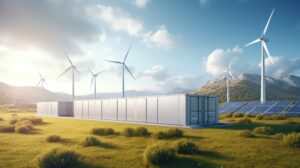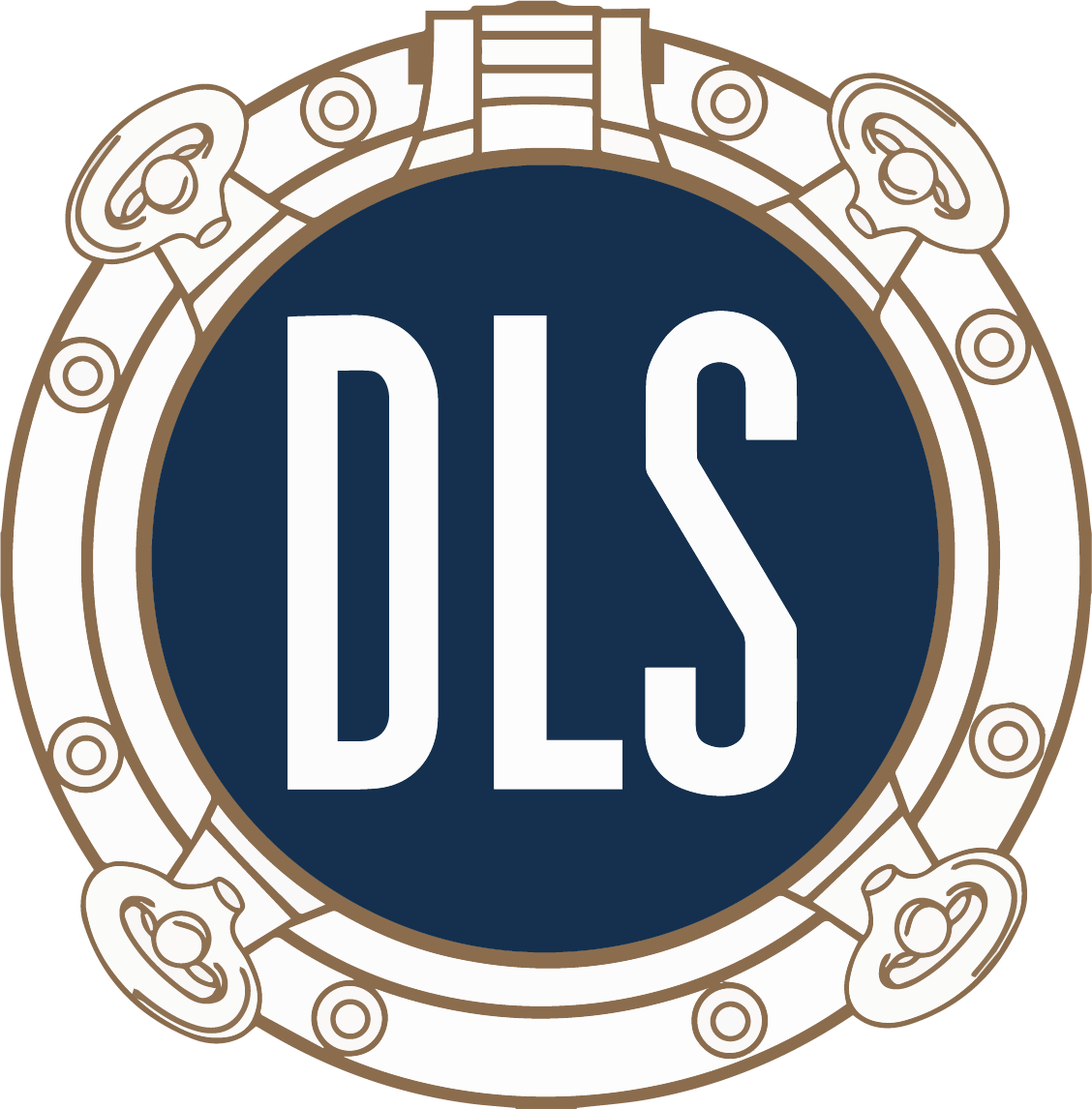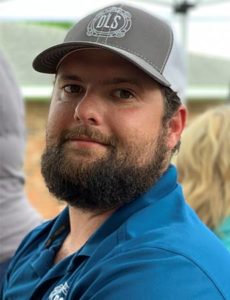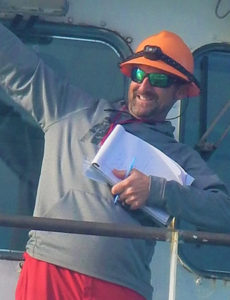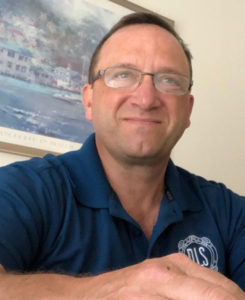- April 17, 2024
- Industry, Marine News
- 2023 10-K Annual Statements – Corporate Cliffs Notes
“I never guess. It is a capital mistake to theorize before one has data. Insensibly one begins to twist facts to suit theories, instead of theories to suit fact.”
-Sherlock Holmes, A Scandal in Bohemia, Sir Arthur Conan Doyle
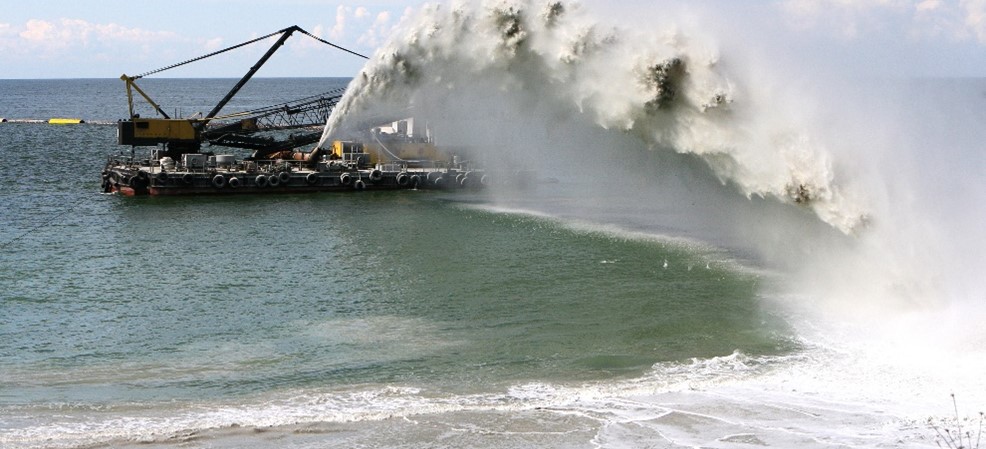
Today we look at the stats! I am digging into the 10-K reports for publicly traded companies relating to the marine industry to see what their numbers can tell us about the current state of profit and risk.
Great Lakes Dredge & Dock
GLDD is the largest domestic dredging company. They divide their work into three sections and their 2023 income was derived from the following segments:
- Domestic work generally involved with port construction and improvement (32%)
- Domestic coastal protection- a growing field (33%)
- Domestic waterway maintenance, keeping rivers and harbors at required depth and width (32%)
- Domestic river and lakes work including inland rivers, levee building, habitat improvement and environmental restoration via the use of smaller equipment like portable dredges and bucket dredges (3%)
- Foreign work. Foreign dredge work is very competitive with many large international dredging companies to bid against. GLDD in the past has worked outside the U. S. and continues to bid on suitable projects (0%)
As the first domestic dredging company to move into offshore wind farm construction, GLDD is building an offshore windfarm rock installation vessel, ACADIA, for delivery in 2025. ACADIA is slated for a contract with the Empire Wind I field to lay rock as a scour protection to the bases of the towers which act like rock breakwaters that protect shorelines. This vessel also has a contract to lay stone to protect subsea cables. The reported cost of this impressive vessel is $197 million dollars.
GLDD Port Area Work
The 2023 Omnibus Appropriation Bill set aside $8.66 billion dollars for Corps of Engineers (COE) projects. The Water Resources Development Act of 2022 authorizes the COE financing of ecological related projects such as flood barriers and hurricane protection and restoration. $17.4 million is allotted for disaster relief. Between 2021-2023, GLDD’s average bids totaled $713 million.
GLDD’s port work and offshore wind construction segments are expected to grow. One area in port expansion is the growth of LNG exporting, as the new facilities need harbor preparation. The other growth area is the need to dredge harbors and approaches to the major U.S. ports so they can accept larger container and passenger ships that each industry sector is building.
In the year 2023, 75% of GLDD’s income came from 39 contracts. All are federal or third party related to federal work. It is not unusual for a bid winner to go to other dredging companies to hire the necessary equipment so one does not have to be the bid winner to have equipment working.
While the government usually awards bids to the low bidder, they also consider the equipment and experience each bidder has. There are four major dredging companies that bid on 66% of the largest jobs. GLDD’s competition was given in my annual report reviews for 2022.
Here are GLDD’s current major equipment sectors:
- Two new 6,500 cubic foot trailing arm dredges; GALVESTON ISLAND and AMELIA ISLAND
- Large hydraulic dredge group river and near coastal, 18” to 30” pumps
- Small hydraulic dredges for river and inland, 10” to 22” pumps
- Thirteen scows (of which three are new builds) between 5,000-8,000 cubic foot capacity
- Two new Damen Multi Cats. These are a new design that can act as small tugs for shifting dredges and moving barges and with having the stability of catamaran twin hulls they can more safely move anchors and buoys.
The reported age of their fleet:
Type No. of Vessels Average Age
Hydraulic dredges 8 45
Hopper barges 5 23
Mechanical dredges 4 35
(bucket dredges)
Misc. barges 86 22
An aged fleet in this industry is not uncommon. The work of much of the equipment is frequently in fresh water which avoids saltwater corrosion. Dredges are very expensive to replace, so between contracts, downtime is used for preventive or life extension maintenance. This is of great importance as any breakdown during a project imperils the terms of the bid in amounts moved or time spent. The large hydraulic dredges have U.S. Coast Guard Certificates of Inspection (COI) and are also inspected by COE inspectors, so standards must be maintained.
On the financial side, GLDD reports that in 2023, 34% of their backlog (a reported $350,242,000) is pending from the COE projects. An additional 50% of the backlog is from two private companies. This might be the wind farm related projects.
All annual reports contain a section headed Risks. For GLDD, the ACADIA is under construction and is a fixed expense while the income from the wind farm construction can be affected from changes in the offshore wind market. GLDD applied for a MARAD Title IX loan but that is still under consideration.
In 2023, profit was higher than 2022 but still lower than 2021. Stock values are down. The positive side is that their contract backlog is larger than in 2021 and 2022 combined and the COE budget has increased for 2024 contracts. Most work will continue to come from governmental contracts if there are no future changes to the budgets under the above bills. Operators are depending on the next few years to be good, with the construction of new hydraulic dredges.
Regarding ESG, I can see dredging companies being pushed to have equipment with low levels of GHG emissions. While the COE may encourage it, more ports are bringing in regulations that require clean exhaust in their port.
Conrad Shipyard
Conrad’s 10-k report has yet to be released as of the time of this writing.
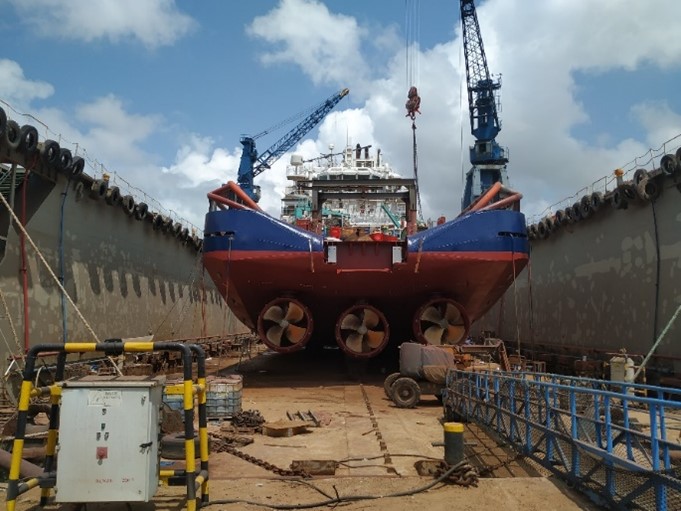
Gulf Island Fabrication
In early March, Gulf Island Fabrication released its 10-K report.
The overview is that 2023 was slightly better than 2022 with progress being made in the closure of the Shipyard Division and the accompanying settlement with Hornbeck on the MPSV construction contract. There is still some hangover in the Shipyard Division with one more year of warranty on the last vessels built by the yard. The Services Division showed some growth, particularly due to their new offering, Spark Safety, and continued projects for their Fabrication Division. The total personnel count in 2023 was similar to that of 2022.
In 2022, 48% of revenue came from two customers which increased to 53% in 2023. It was not the exact same customers but a similar customer base, mainly offshore related construction of structures and of related systems. However, management spoke of their future goal to move away from the volatile oil and gas related offshore and towards similar services in shore-based oil and gas. This would particularly be LNG, construction for offshore wind, and for customers in other alternative power industries. Management also wants a move toward more Time & Material (T&M) work. The primary goal for the offshore oil and gas group is to continue to grow subsea structure fabrication, a service that grew in 2023.
While 2023 showed a slightly higher gross income, the year still concluded with a gross loss due to the cost of closure of the Shipyard Division and the Hornbeck MPSV settlement. The settlement loss was $32.5 million including the asset’s value and a cash settlement with Hornbeck Offshore. There was a move towards lower in-house costs in the divisions and management organization. As far as stock pricing, in 2022, it dropped $0.21/share, while in 2023 it dropped an additional $1.51/share.
Seacor Marine
Seacor has not yet put out their 2023 10-K report, but they have published a Seacor Marine Holdings Incorporated Investors Presentation. It is 27 pages of tables, graphs and charts that give you a picture of their company and an overview of the world service vessel industry. This provides more information for the average user than combing through a 10-K. You can find this report on their website: Seacor Marine Holdings Report
Overseas Shipholding Group
OSG is a major Jones-Act operator of liquid cargo vessels. Its fleet totals 21 tankers of various use, with a total of 1.5M DWT. Most of the fleet operates on negotiated day rate time charters and some in the Spot Market.
The liquid cargo marketplace has been unsettled by world events. A major factor is the war in Ukraine, associated with retaliation against Russian oil. The dangers in the Red Sea have reduced shipping traffic on that route. This disruption in trade routes has increased the length of delivery routes, which increases the number of vessels that must be in service. To move the same amount of cargo, it now takes more days and therefore higher ton-miles. This international situation has also helped domestic oil related industries.
OSG’s service is also in movement of renewable diesel made from sources like soybean or canola oil, and movement of similar feed stocks. Much of this is transferred from the U.S. Gulf of Mexico to California.
The Government recently allowed new drilling in Alaska. This will, in several years, increase the Alaskan output by around 250,000 BBL per day that will supply WA and CA refineries. OSG already has three Alaskan class crude oil tankers and has just purchased the ALASKAN FRONTIER from BP Oil at a reported cost of $20,000,000. This is a sister ship of the other three. The new purchase has been laid up in Asia since 2019, and OSG will have to make it suitable for the new service. They expect the vessel to be ready in the 4th quarter 2024. Additionally, OSG is starting a life extension program with engine builder MAN B&W that will extend the life of the three ships and reduce fuel consumption by 15-20%. This will be done with considerable expense, but OSG states that there will be a satisfactory ROI.
An interesting note is that Saltchuk Resources, present owner of 21% of the OSG stock, has put in a bid to buy the remaining stock of OSG.
Because of the volatility of petroleum markets, OSG is looking to put more vessels in the spot market versus the time charter business model. This may indicate that they believe there will be better profits in that area than having vessels at a fixed income in a 3–5-year charter. They are also moving towards carrying liquid CO2. They are collaborating on a project in Tampa for the collection of CO2 from Florida based industries. Tampa would act as the hub for storage and sequestration, and possible future movement of the liquid CO2 from there to injection sites.
OSG provided data:
Fleet Make up Owned Chartered Total
MR Product tankers 5 8 13
(Medium Range)
Crude 4 0 4
(Three crude tankers are the present Alaskan vessel and the 4th is the new purchase.)
Refined products ATB 2 0 2
Lighterage ATB 2 0 2
OSG states that the weighted average age of their fleet is 16.3 years. The economic life of their tankers, for accounting purposes, is calculated at 25 years and the ATBs at 30. From what we have heard, owners who have built new Jones Act vessels for coastwise and full ocean service are aiming for an economic life closer to 40 years. Designing ships that will last and have reduced maintenance costs is one part of the reason that large domestic built ships are more expensive than foreign built ships which have planned economic lives of 20-25 years.
OSG Time Charter Revenue 2021 71%
2022 70%
2023 80%
Spot Market Revenue 2021 29%
2022 30%
2023 20%
The spot market is seasonal as are many international trades with goods and materials being moved before they are needed.
OSG is run entirely in-house unlike many vessel owners that hire technical management companies for maintenance and crewing. OSG has a reported 1,000 mariners, 850 of them union, and 78 shore personnel.
The international marine industry is highly affected by IMO regulations that force ships to reduce GHG emissions, particularly CO2. OSG only has one vessel that will fall under the 2025 IMO EEDI compliance standards. There is no anticipation that there will be any new domestic EPA standards. The IMO-EU standards will affect OSG if any of their vessels are chartered for service in or out of the EU. Considering the high compliance cost, such service could be feasible if the charterer is willing to pay non-compliance penalties.
With new IMO-EU regulations for clean scrapping, costs could be expensive when scrapping tankers, particularly those in the crude trade. This will in turn reduce the net recovery.
OSG’s profits were higher in 2023 than the two previous years. A significant charter of three outside ships ended which reduced some of their revenue, though fewer days were lost in 2023 due to ships being laid up and idle. The company’s outlook is good with no anticipated new construction from competitors. This is due to the higher costs noted above and the current high interest rates. Also, scrapping has produced a balanced market.
OSG recognizes that the value of their fleet cannot be easily determined. With such a small market, the vessels are quite illiquid and there is very little open S&P activity.
Arcosa
Arcosa has three sectors: Construction Products (mainly aggregates), Engineered Structures (including wind towers), and Transportation Products. Wind towers alone encompass 8-9% of their business.
The Transportation Products sector includes the construction of hopper barges, fiberglass hopper covers, tank barges, and items such as barge winches. It also includes equipment for rail cars, mainly forged parts. Most work in this sector is from marine products. The 2023 backlog for 2024 delivery is $253.7 MM up from $225.1 MM in 2022.
The weighted production capacity utilized in 2023 was 70% in both Construction Products and Engineered Structures, and 45% in Transportation Products.
Contracts for the Transportation Products sector for 2024 deliveries were $86 MM for both hopper and tank barges. The current demand for new builds is steady as scrapping is out pacing new construction.
Revenue was up 38% from 2021 to 2022 and 36.6% from 2022 to 2023. Most of this gain was from the steel construction group and hopper barges as tank barge work was down from 2022. Costs also rose but at a lesser rate. The biggest jump was steel costs for barge construction.
Profits in the sector were $6.4 MM in 2021, $11.5 MM in 2022 and $45.8 MM in 2023. The year 2023 had a boost in profit from both higher volume and higher margins in the barge sector. Specifically for the inland barges, revenue was $215.7 MM in 2021, $189.9 MM in 2022, and $280.2 MM in 2023.
The overall corporate cost of revenue fell in 2022 from 89.2% to 83.6% as a result of corporate goals to increase efficiency and reduce overhead expenses.
Ingalls-HII
Ingalls’ 2023 report showcases a positive year. The segment operating margin in 2023 was 7.4%, up from 6.7% in 2022. Since their entire business is from military and/or other governmental sources, it does not pertain to the civilian maritime industry.
Caterpillar
CAT’s sectors include Construction Industry, Resource Industries, Energy and Transportation, and Financial Products. Our interest here is in Energy and Transportation. Within this group are reciprocating engines and generator sets, marine oil and gas, and engines for industrial machinery which includes electric power generation, turbine centrifugal gas compressors, and diesel electric locomotives.
While Financial Products once had a large presence in vessel construction, this has since ended. The only connection now to marine is through parts and service.
Within marine, CAT’s largest competitors are Cummins, Deutz, Volvo Penta, and MAN Energy Solutions (a VW subsidiary).
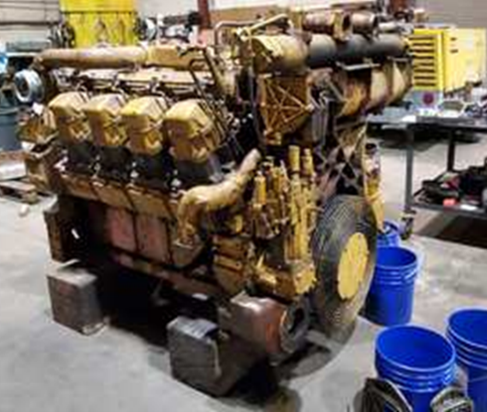
Looking at the entire company, all services and world areas, 2023 was better than 2022. Worldwide, there was an increase of approximately 2,000 personnel. Their stock has also done very well.
For 2024, Caterpillar expects the marine side of the Energy and Transportation Sector to be the strongest with anticipated growth over 2022. This growth will be tied to the need for high-speed diesels as customers upgrade their aging fleets. The other sectors are expected to stay flat, but there will be a slight increase in profit by slightly higher margins. As CAT puts it, “favorable price realization”.
In the total Energy and Transportation sector, sales and revenue were up 18% with lower increases in the other sectors. Profit was up 49%. Most of the gains were from North American operations.
On the expenses side, costs increased for materials, supply chains, interest rates, and labor to include education costs. These expenses are true in all the industries included in this edition. There are also losses due to international currency exchange. As one would expect in the modern engine industry, research and development costs are a significant factor as well.
Cummins Inc.
Cummins consists of five sectors, Components, Engines, Distribution, Power Systems, and Accelera.
- Components are for industry, mainly transportation. Within marine, it includes engine emission solutions and engine bolt-on components like turbos and fuel systems, filters, and chemicals like coolants.
- Engines are for heavy, medium, and light duty trucks and vehicles, and off-highway to include marine. The sales in this sector were 33% in 2021, 31% in 2022, and 38% in 2023. The off-road subsector accounted for only 17% of sales. In 2022, off-road dropped 2% and an additional 2% in 2023. It was not noted how much of this involved marine engines.
- Distribution is related to sales.
- Power Systems includes power generation systems including marine. Caterpillar and MTU are among their major competitors. The sales in this sector have been flat for the last three years.
- Accelera is a new sector involved in hydrogen production technology.
Cummins’ R&D costs were $1.1 billion in 2021, $1.2 billion in 2022 and $1.4 billion in 2023. While some of this cost was to produce products that are cleaner and smarter, an expense for all engine manufacturers, I believe a lot of money went into the new field of hydrogen power.
Sales were up in 2023 in the Component sector, specifically from the sales of axels and brakes.
Power Systems sales were up 13% and comprised 18% of corporate sales. The other sectors, Components, Engine, and Distribution were each in the range of 30%.
Cummins notes that the betterment of some sectors was due to “favorable pricing”.
Cummins’ risks were similar to Caterpillar’s, except that Cummins has additional risk with four manufacturing plants in China. Cummins also took a hit having to close their Russian Federation business and move it to other sites in the EU.
The only mention of marine is that they expect some growth in 2024.
Predicting risk and profit
This risk section in the 10-Ks of any of these companies is similar. Much of the marine industry’s profit is dependent on competitive bidding. Shipyards and GLDD bid on future work not knowing the future state of the market when the work will commence. Their projects can take one to two years, again subject to changing economics and cancellations. They have money out in advance, possibly getting progress payments, but possibly not reaching a profit point until the contract is completed. Shipyards and dredging companies obtain insurance on what they are building as it is being built—to include performance bonds in place until the job is completed. Yet, even once their insurance coverage ends, shipyards still must uphold any warranty agreements on their products or services despite the added costs.
In my next article, I will get back to ongoing changes in the marine industry, from the history of ship design and propulsion to the most recent advances in ship design and regulations.
-Norman Laskay
If you’d like to keep this conversation going, please email me at nlaskay@DLSmarine.com



